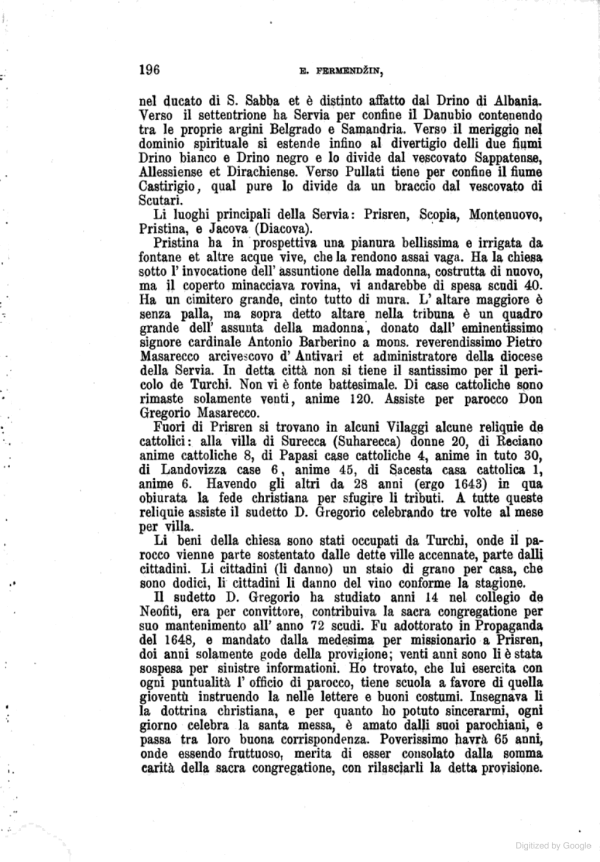1671, Stefan Gaspari

Pristina has a beautiful stretch of plain, watered by fountains and other active waters, which make it very cloudy. There is a church named after the Holy Lady, rebuilt, but with a roof that is in danger of collapsing, [which] would cost 40 scudi to repair. There is a large cemetery, completely surrounded by walls. The space of the main altar is without an altar, but above this space mentioned in the tribune there is a large painting of the Holy Lady, donated by the most eminent Cardinal Antonio Barberino to the venerable Mr. Pjetër Mazrek, archbishop of Bar and administrator of the diocese of Service. The Blessed Sacrament is not kept in this city because of the danger of the Turks. There is no baptismal font. There are only twenty Catholic houses left, with 120 souls. Don Gjergj Mazreku helps as parish priest. [...]
The report of Brother Bernardo from Montenegro:
On the 7th of August. Leaving from Novobërda we arrived in Pristina located near some hills; there is no Latin church in the city but [one is] outside under the name of Saint Veneranda [a] half mile [about 800 meters] away. Because of the danger from the Turks, mass is rarely sung here and the faithful [rarely] go to listen, and especially the female gender [who] must walk very carefully. Most often it is celebrated in houses with guards at the doors without bells and with a lot of fear. I live in about 15 houses of Catholics, with about 80 souls.
Fermendzin, Eusebio (1892). Izprave hit 1579–1671. tičuće se Crne gore i stare Srbije. In Starine (25), Zagreb, p. 196–198. Original document: Tabular. s. Congregation. de propaganda fide. Origin. Vol. 220 fol. 69. (Translation: Yll Rugova)